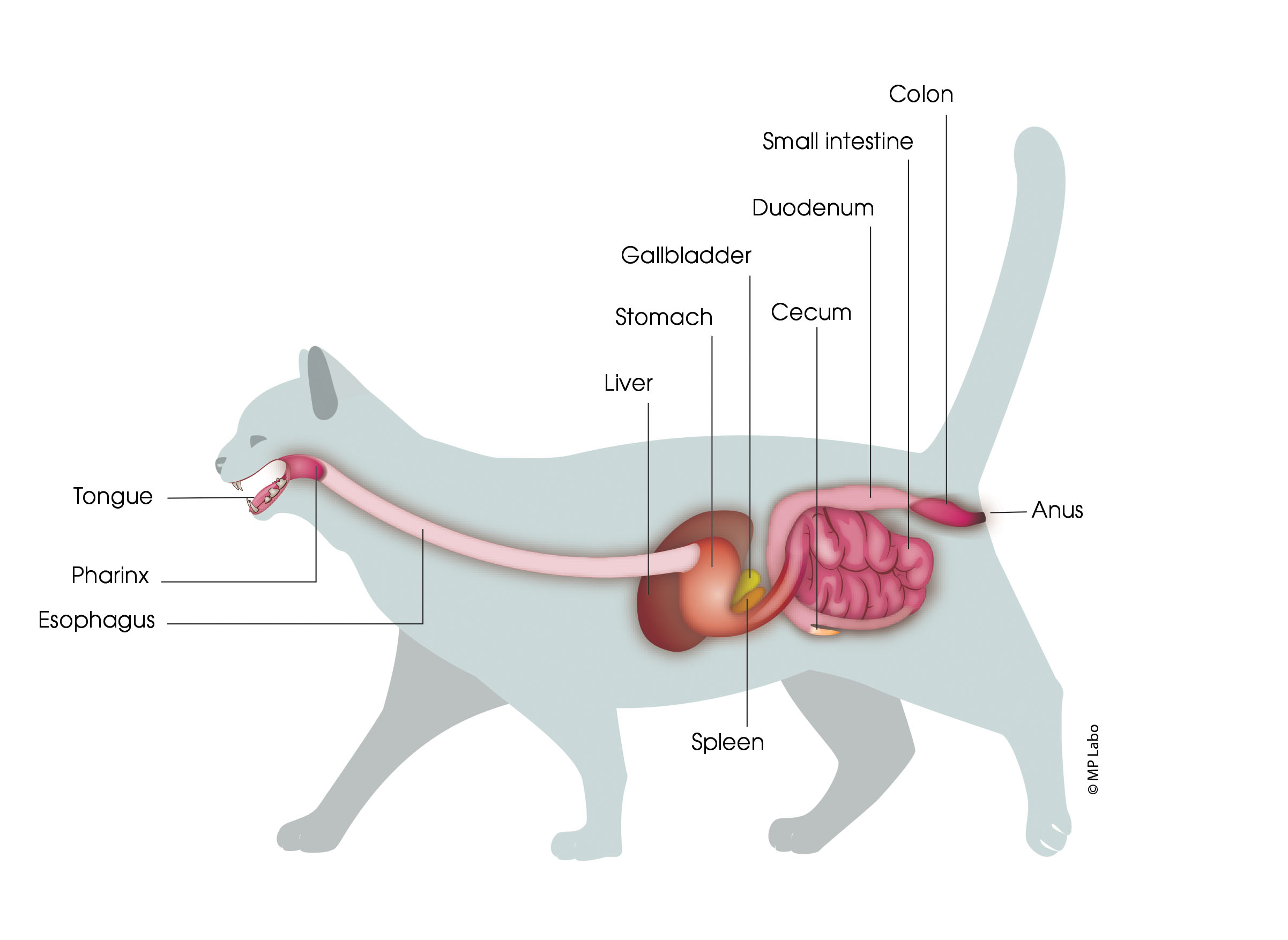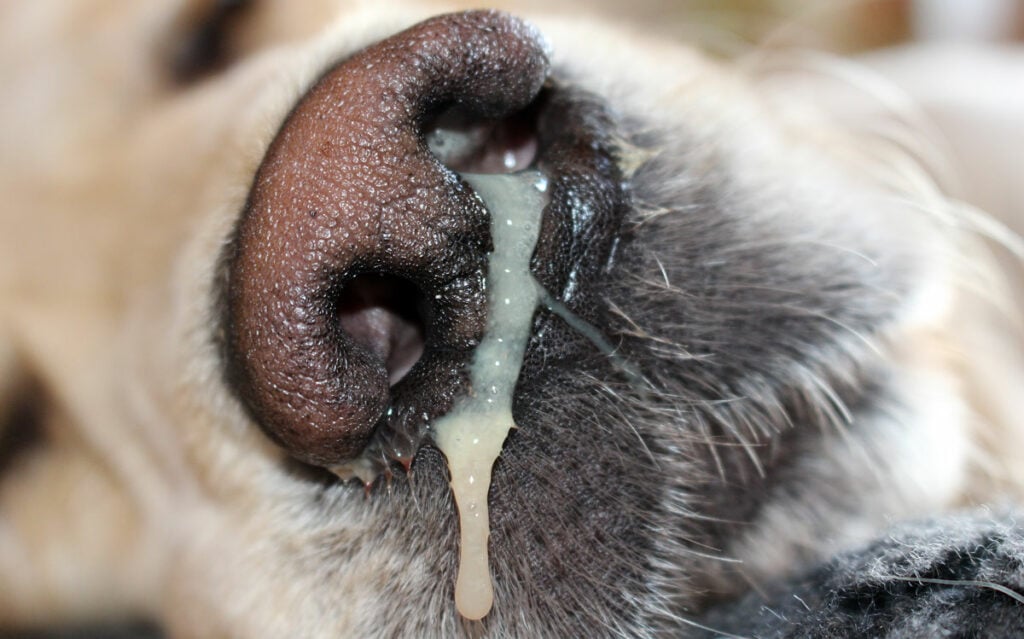Cats may be small, but their bodies are highly specialized — especially when it comes to digestion. As obligate carnivores, cats rely heavily on meat for survival, and their digestive system of the cat reflect this biological need. Understanding how a cat digests food can help pet owners make informed decisions about diet, health, and wellness.
We’ll take a journey through the digestive system of the cat, exploring each stage from the moment food enters the mouth to the final exit from the body.
The Mouth: Where It All Begins
Digestion begins in the mouth, but not as it does for humans. Cats possess pointed, shearing teeth meant for tearing flesh, not grinding. Their saliva lacks digestive enzymes, as opposed to ours — it is primarily a lubricant to ease food down the esophagus.
Cats don’t chew much, particularly if the food is soft or in little pieces. After swallowing, the food passes rapidly down the esophagus and into the stomach.
The Stomach: Chemical Breakdown
The stomach is where the serious digestive work starts. It produces strong hydrochloric acid and enzymes such as pepsin to digest proteins — which are plentiful in a cat’s meat diet.
Cats possess an extremely acidic stomach environment, a pH of approximately 1 to 2. This acidity serves to:
- Kill pathogenic bacteria
- Digest hard proteins and bones
- Pre-digest food for further digestion in the small intestine
The food is churned into a semi-liquid material known as chyme and released slowly into the small intestine.
The Small Intestine: Nutrient Absorption
The three parts of the small intestine are the duodenum, jejunum, and ileum.
Key Functions:
- Pancreatic enzymes and bile from the liver are released into the duodenum to facilitate the digestion of fats, proteins, and carbohydrates.
- A majority of the nutrient absorption takes place in the jejunum and ileum.
Although cats do not need much carbohydrates, their small intestine still digests them—just less efficiently than a human or dog’s. The cat body is more interested in the absorption of amino acids (derived from proteins) and fatty acids (derived from fats).
The Large Intestine: Water and Waste
Whatever is not digested in the small intestine moves into the large intestine, or colon. Water and some vitamins are absorbed here, and the rest of the waste is pressed into feces.
Cats have a short colon, as compared to many other animals, which is reflective of their meat-eating diet — they don’t require as much time for fermentation as herbivores, who subsist on fiber breakdown.
The Rectum and Anus: The Final Step
The waste substance is retained in the rectum until the time of defecation by the cat. Exit at the last through the anus terminates the digestion process.
Routine passing of bowels is the mark of a well-functioning Digestive System of the Cat. Varying bowels (e.g., diarrhea, constipation, change of color) indicate dietary imbalances or illness.
Unique Characteristics of the Digestive System of Cats
- Brief Digestive System: Cats are capable of speedy digestion of the consumed food in generally 12–24 hours.
- Low Carbohydrate Tolerance: Their metabolism is not set up to be able to easily digest plant-based foods.
- High Protein & Fat Requirement: Cats need animal proteins to provide vital nutrients such as taurine and arachidonic acid, which cannot be obtained through plants.
Dietary Troubles Common to Cats
- Hairballs: From grooming, sometimes pass on their own, but may result in vomiting or constipation.
- Food Intolerances: Some cats can be finicky about a certain protein or grain.
- Parasites: Worms interfere with nutrient absorption and lead to diarrhea.
- Inflammatory Bowel Disease (IBD): Long-term inflammation of the gastrointestinal tract, necessitating veterinary attention.
How to Support Your Cat’s Digestive Health
- Feed a balanced, species-appropriate diet (high in meat protein).
- Provide fresh water at all times.
- Brush your cat frequently to minimize hairballs.
- Do not feed table scraps or dairy (most cats are lactose intolerant).
- Regular vet check-ups to detect any problems early on.
Cat Digestive System – FAQs
Seek veterinary help if your cat:
Vomits repeatedly
Has diarrhea for more than 1–2 days
Stops eating or drinking
Shows signs of pain or bloating
Has blood in vomit or stool
Yes. Intestinal worms (roundworms, tapeworms, etc.) can cause:
Diarrhea
Weight loss
Poor coat quality
Digestive discomfort
Regular deworming and vet checks are important.
Most healthy adult cats poop once a day. Constipation or diarrhea can indicate problems.
Cats groom themselves often, and ingest hair, which can form balls in the stomach. Normally, hair passes through the digestive tract, but when it builds up, it may be vomited as a hairball.
Prevention:
Regular brushing
Hairball formula diets or treats
Signs of digestive trouble:
Frequent vomiting
Persistent diarrhea or constipation
Weight loss
Lack of appetite
Bloated abdomen
Lethargy or discomfort after eating
Yes. Cats are obligate carnivores, meaning they require:
Animal proteins
Taurine (an essential amino acid found in meat)
Specific vitamins (e.g., preformed vitamin A)
They cannot thrive on a vegetarian or vegan diet.
Final Thoughts
The cat’s digestive system is a highly efficient piece of machinery designed to digest meat quickly and well. As the owner of your pet, an understanding of how your cat works can assist you in identifying any potential issues and give your cat the best possible care.
Whether you’re selecting a new cat food or trying to understand why your cat vomited up a hairball, it all comes back to the way their Digestive System of the Cat is designed to work. By honoring their biology, we can allow our feline companions to lead healthier, happier lives.



